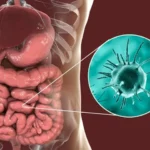NURS FPX 4015 Assessment 2: Advancing Nursing Practice Through Evidence-Based Change
Course Context
NURS FPX 4015, part of Capella University’s RN-to-BSN FlexPath program, emphasizes NURS FPX the role of nurses in driving improvements in patient care through leadership, evidence-based practice (EBP), and professional communication. Assessment 2 typically focuses on identifying a clinical issue, reviewing current evidence, and proposing a change strategy that aligns with patient-centered care and organizational goals.
Purpose of Assessment 2
The objective of NURS FPX 4015 Assessment 2 is to give nursing students the opportunity to:
Apply evidence-based research to a real-world clinical problem.
Demonstrate skills in critical thinking and clinical reasoning.
Formulate a practical, patient-centered change proposal.
Strengthen leadership and collaboration abilities in the healthcare setting.
Key Components of the Assessment
1. Identifying the Clinical Problem
The starting point is to select a relevant, high-impact clinical issue from your current or recent practice setting. Common topics include:
Hospital-acquired infections (HAIs) prevention.
Reducing patient falls.
Improving medication administration safety.
Enhancing patient discharge education.
Addressing nurse burnout and retention.
Tips for selection:
Choose a topic you are passionate about.
Ensure the problem has enough peer-reviewed literature to support your research.
Align it with your organization’s strategic goals and patient safety priorities.
2. Reviewing the Literature
This section involves comprehensive evidence gathering to support your change proposal.
Use databases like CINAHL, PubMed, and ProQuest.
Include 5–10 scholarly sources published within the last 5 years.
Evaluate the strength of evidence using frameworks such as the Johns Hopkins Nursing Evidence-Based Practice Model or Melnyk’s Levels of Evidence.
Example:
If addressing falls prevention, you might compare evidence on bed alarms vs. hourly rounding to determine the most effective intervention.
3. Developing an Evidence-Based Change Strategy
After identifying the problem and reviewing research, create a clear, actionable plan.
Key considerations:
Specific intervention: What exactly will be implemented? (e.g., hourly rounding protocol, new patient education program)
Stakeholders: Who will be involved? (nurses, physicians, patients, families, administration)
Resources required: Budget, staffing, technology, training.
Implementation timeline: Short-term, mid-term, and long-term goals.
4. Leadership and Communication
A major component of Assessment 2 is demonstrating how you will lead and communicate effectively during change implementation.
Strategies:
Use transformational leadership to inspire team members.
Provide regular updates through staff meetings, emails, or huddles.
Encourage interdisciplinary collaboration to improve buy-in.
Apply active listening and conflict resolution skills to address resistance.
Example:
If nurses resist a new documentation process, explain the evidence-based benefits and provide hands-on training sessions.
5. Measuring Outcomes
Measurement ensures that your change is producing desired results.
Define key performance indicators (KPIs) such as reduced fall rates, increased patient satisfaction scores, or lower readmission rates.
Use pre- and post-intervention data to compare outcomes.
Include both quantitative data (statistics) and qualitative feedback (staff and patient perceptions).
Writing Tips for Assessment 2
1. Follow the Required Structure
A clear outline helps meet all rubric criteria:
Introduction – Introduce the clinical problem and purpose.
Background – Describe the significance of the problem.
Literature Review – Summarize and evaluate evidence.
Proposed Change – Explain your evidence-based intervention.
Implementation – Describe steps, leadership, and communication strategies.
Evaluation – Define how you will measure success.
Conclusion – Reinforce the importance of your proposal.
2. Maintain Scholarly Tone
Avoid first-person pronouns unless allowed.
Use APA 7th edition formatting for citations and references.
Write in a clear, concise, and professional manner.
3. Common Mistakes to Avoid
Choosing a topic with little to no recent research.
Presenting personal opinions instead of evidence-based reasoning.
Overlooking organizational culture and feasibility in your proposal.
Forgetting to include measurable outcomes.
Example Outline for a Falls Prevention Project
Title: Reducing Patient Falls in a Medical-Surgical Unit Through Hourly Rounding
Introduction
Falls in hospitalized patients can lead to injuries, extended stays, and increased NURS FPX 4015 Assessment 2 healthcare costs. The purpose of this project is to evaluate hourly rounding as a falls prevention strategy.Background
Current hospital falls rate exceeds the national benchmark of 3.4 falls per 1,000 patient days.Literature Review
Studies show hourly rounding reduces falls by improving patient monitoring, addressing needs proactively, and increasing staff visibility.Proposed Change
Implement hourly rounding in the medical-surgical unit, with standardized documentation and staff training.Implementation Plan
Training sessions for all nurses.
Launch over a 3-month trial period.
Regular audits for compliance.
Evaluation
Compare pre- and post-intervention falls data and collect staff/patient satisfaction surveys.Conclusion
Hourly rounding is an evidence-based, cost-effective method to enhance patient safety and reduce falls.
Conclusion
NURS FPX 4015 Assessment 2 is a valuable exercise in integrating nursing leadership, evidence-based practice, and change management. By selecting a relevant clinical issue, thoroughly reviewing the literature, and creating a well-structured change proposal, you can develop skills that directly enhance patient care quality. Effective leadership, communication, and outcome measurement will ensure that your intervention is both impactful and sustainable.















Leave a comment